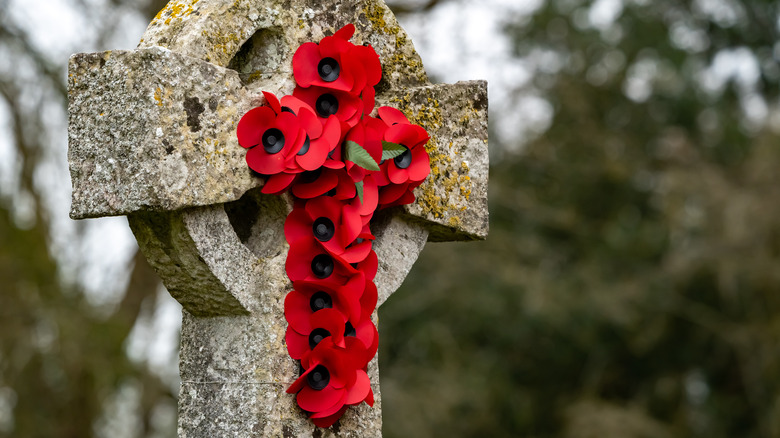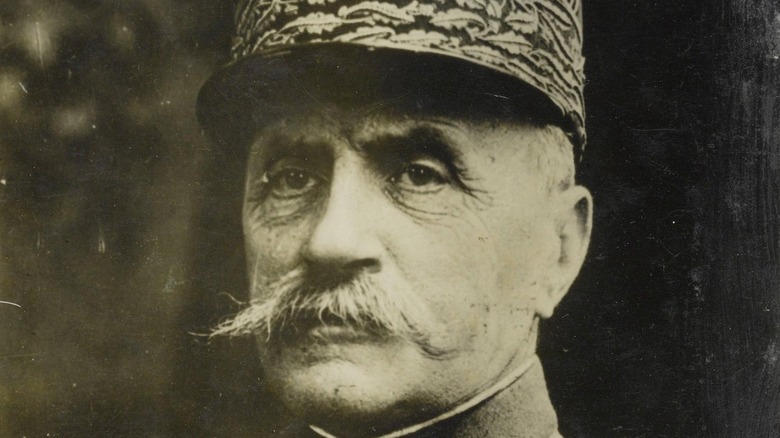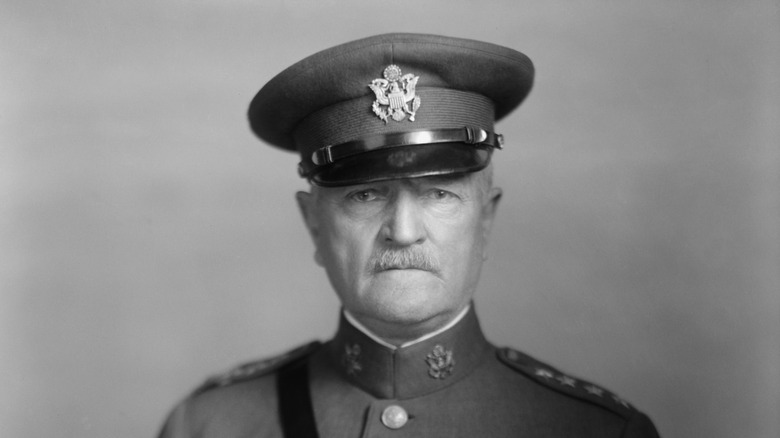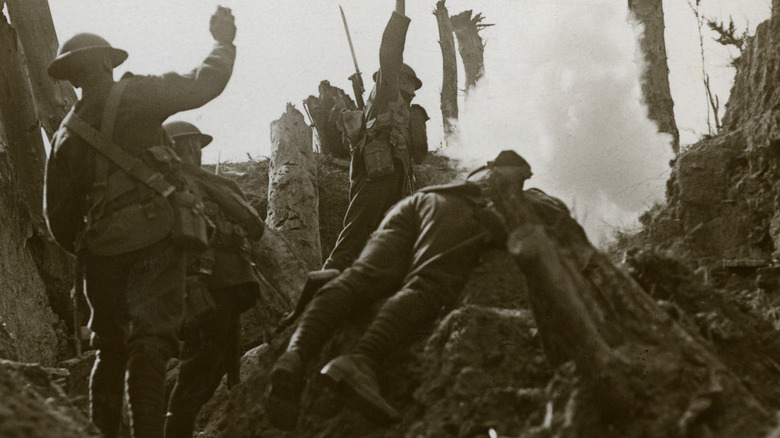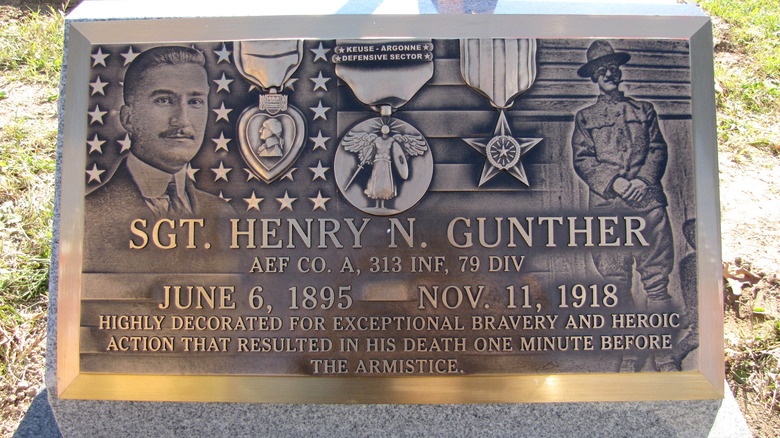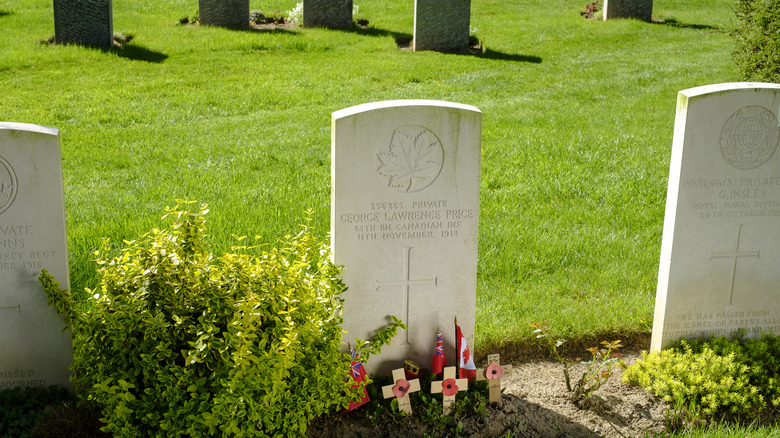The Deadly Six-Hour Period Between The Signing Of The Armistice And The End Of WWI
For a century, history has taught that World War I ended at 11:00 a.m. (Paris time) on November 11, 1918, as BBC News reports, with the signing of an armistice (leading to the day being called "Armistice Day" in some English-speaking countries). However, history is usually a bit more complicated and nuanced than just a single sentence, and this particular case is no different. As History reports, the armistice that ended the war was agreed to and assigned closer to 5:00 a.m. that morning; the decision to officially end the war at 11:00 a.m. was chosen to allow time for word of the armistice to spread to the men fighting the battle on the front lines, as well as for a symbolic purpose.
Unfortunately, a lot can happen in six hours, particularly in war, and in that one morning, 3,000 people died, including an American soldier whose misplaced zeal to redeem himself might have unnecessarily cost him his life (per History).
The Signing of the Armistice
For the remainder of this article, we'll be discussing the armistice that ended the fighting between the Allied and German forces on the Western Front; as the National World War I Museum and Memorial notes, this was the first and the biggest of the dominoes that fell in bringing the war to an end, and that fighting continued in other places. As History reports, representatives from France (including Supreme Allied Commander Ferdinand Foch, above), Germany, and Britain met in a train car in a forest outside of Paris to sort things out. As The History Press notes, Germany was running out of options and its list of allies growing thinner when it was forced to accept the devastating terms of surrender offered up by the Allies. The ink was put to paper at 5:12 a.m., but the signers decided, "for tidiness," as The History Press describes it, to make the armistice effective at 11:00 a.m., about six hours later.
Of course, in addition to the six-hour delay built into the armistice, there was also the matter that communication wasn't instant in those days like it is today, and it would take a while before the soldiers learned that it was time to silence their weapons.
The Waning Hours Of The War
Between the signing of the armistice and it taking effect six hours later, at least a couple of thousand soldiers died in the waning hours of the war. However, there are several things to note here: first is that the estimates vary. For example, The History Press puts the number at 2,738, while History suggests it's "nearly 3,000" without specifying an exact amount. However, Military Times puts the number of wounded, missing, and dead at 10,900, and Military History Now puts the same number at nearly 11,000. Whatever the final figure, it was actually higher than the daily average of casualties during this war.
There are several reasons for this, including the limitations of communication in those days. Some commanders feared the enemy wouldn't abide by the armistice, according to Military Times. Some commanders wanted one last shot at glory. Some had grown addicted to killing. Jonathan Casey, director of the archives and Edward Jones Research Center at the National World War I Museum and Memorial, says via History that some Allies simply wanted to use these final few hours to drive home a point. "The Allies, though, wanted to show the Germans that they were going to press until the final hour so they knew they were serious about the armistice terms," he said.
The 313th Infantry Fights Until The End
As the morning broke on November 11, 1918, the men of the 313th Infantry Regiment of the 79th "Liberty" Division, led by subordinate brigadier general William Nicholson, were outside of the French town of Ville-devant-Chaumont (via History). It was here where, for the previous two months, they had been engaged in near-constant battle with the Germans. "Commanders were told to keep fighting all the way to 11:00 a.m.," Casey said. Not all of them did, however, after evaluating for themselves whether or not it was prudent. But fight all the way to 11:00 a.m. Nicholson's men did. "There will be absolutely no let-up in the carrying out of the original plans until 11 o'clock," Nicholson had said.
One of the men under Nicholson's command would be the last American to die in the war, with literally seconds ticking away on the clock, as he valiantly made one last effort to redeem himself from shame.
Henry Gunther Goes Down Swinging
Henry Gunther of Baltimore was called up into the war and sent to the Western Front, where he served admirably. Unfortunately, as The Baltimore Sun reports, he'd written a letter home in which he complained about the conditions of serving in the war, and according to History, encouraged the recipient to avoid serving in the war effort. Military censors intercepted his letter and considered it a violation of Army regulations, and he was demoted to private. According to a descendant, the woman who was to marry Gunther broke off the engagement in shame over his actions.
Perhaps in a bid to redeem himself, as the final minutes ticked down until the armistice, Gunther ran headlong towards a German stronghold, even as his own men and the Germans begged him to stop. Eventually, they turned their machine guns on him, and by some accounts, he was the last person on either side to die in the war — or at least, the last American. "Gunther still must have been fired by a desire to demonstrate, even at the last minute, that he was courageous and all-American," wrote Baltimore Sun reporter James M. Cain. For his efforts, Gunther was posthumously promoted to sergeant and awarded the Distinguished Service Cross.
So Does George Lawrence Price
American Henry Gunther may not have actually been the last Allied soldier to die before the World War I armistice took effect, however. Like Gunther, a Canadian soldier, George Lawrence Price (whose grave is pictured above), died even as the final seconds of the war were ticking away. According to Military History Now, Price was in the Belgian town of Ville-Sure-Haine, chasing the retreating Germans. At some point, he ducked into a house for cover, and then, at 10:58 a.m., he stepped back out, whereupon he was struck in the chest and killed by a German bullet. He took his last breaths literally at the same time the American was taking his, about 140 miles away.
In 2015, according to a memorial website dedicated to Price, an elementary school in the Belgian town of Ville-sur-Haine named a school in his honor, while Canadian and Belgian dignitaries, and the local schoolchildren, participated in a ceremony that honored the name change.
